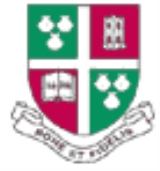
Woodhouse Grove School
Encyclopedia
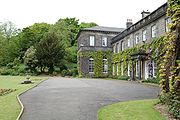

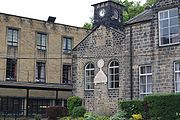


Independent school
An independent school is a school that is independent in its finances and governance; it is not dependent upon national or local government for financing its operations, nor reliant on taxpayer contributions, and is instead funded by a combination of tuition charges, gifts, and in some cases the...
, coeducational, day and boarding public school
Boarding school
A boarding school is a school where some or all pupils study and live during the school year with their fellow students and possibly teachers and/or administrators. The word 'boarding' is used in the sense of "bed and board," i.e., lodging and meals...
and Sixth Form college
Sixth form college
A sixth form college is an educational institution in England, Wales, Northern Ireland, Belize, Hong Kong or Malta where students aged 16 to 18 typically study for advanced school-level qualifications, such as A-levels, or school-level qualifications such as GCSEs. In Singapore and India, this is...
in Apperley Bridge
Apperley Bridge
Apperley Bridge is a village in the metropolitan borough of the City of Bradford, in West Yorkshire, England. Apperley Bridge is north-east of Bradford on the boundary with the City of Leeds bounded in part in the east by Carr Beck and to the south by Greengates. The village of Apperley Bridge...
, Bradford
Bradford
Bradford lies at the heart of the City of Bradford, a metropolitan borough of West Yorkshire, in Northern England. It is situated in the foothills of the Pennines, west of Leeds, and northwest of Wakefield. Bradford became a municipal borough in 1847, and received its charter as a city in 1897...
, West Yorkshire
West Yorkshire
West Yorkshire is a metropolitan county within the Yorkshire and the Humber region of England with a population of 2.2 million. West Yorkshire came into existence as a metropolitan county in 1974 after the passage of the Local Government Act 1972....
, England
England
England is a country that is part of the United Kingdom. It shares land borders with Scotland to the north and Wales to the west; the Irish Sea is to the north west, the Celtic Sea to the south west, with the North Sea to the east and the English Channel to the south separating it from continental...
for children aged between 11 and 18. The school, and its preparatory junior school, Brontë House, is located in the Aire Valley
Aire and Calder Navigation
The Aire and Calder Navigation is a river and canal system of the River Aire and the River Calder in the metropolitan county of West Yorkshire, England. The first improvements to the rivers above Knottingley were completed in 1704 when the Aire was made navigable to Leeds and the Calder to...
.
Originally founded as an all boys boarding preparatory institution, for the sons of Methodist Ministers, the school has developed over the latter part of the 20th century. Woodhouse Grove has evolved into a flexible independent education centre, providing education from the age of three through to graduation from the sixth form. There are approximately 720 students on roll, currently including around 113 boarders.
The school is located in a rural setting close to the metropolitan centres of Leeds
Leeds
Leeds is a city and metropolitan borough in West Yorkshire, England. In 2001 Leeds' main urban subdivision had a population of 443,247, while the entire city has a population of 798,800 , making it the 30th-most populous city in the European Union.Leeds is the cultural, financial and commercial...
, 10 miles (16 kilometres) distant and Bradford, 3.9 miles (6.3 kilometres) away. Leeds Bradford International Airport
Leeds Bradford International Airport
Leeds Bradford International Airport is located at Yeadon, in the City of Leeds Metropolitan District in West Yorkshire, England, northwest of Leeds city centre itself...
is only 2.5 miles (4.7 kilometres) north-east of the school.
Although essentially a Christian school, Woodhouse Grove freely accepts children from other religions or children with no declared religious affiliations. The school offers academic and sixth form scholarship
Scholarship
A scholarship is an award of financial aid for a student to further education. Scholarships are awarded on various criteria usually reflecting the values and purposes of the donor or founder of the award.-Types:...
s, bursaries
Bursary
A bursary is strictly an office for a bursar and his or her staff in a school or college.In modern English usage, the term has become synonymous with "bursary award", a monetary award made by an institution to an individual or a group to assist the development of their education.According to The...
for HM Forces families, clergy families and sixth form, music awards, sport awards and financial assistance for siblings.
Early Plans
Even in the early days of the Wesleyan MethodistMethodism
Methodism is a movement of Protestant Christianity represented by a number of denominations and organizations, claiming a total of approximately seventy million adherents worldwide. The movement traces its roots to John Wesley's evangelistic revival movement within Anglicanism. His younger brother...
movement a need had been identified for a school located in the north of England as a boarding establishment to educate the sons of ministers who moved frequently from ministry to ministry around the country. Kingswood School
Kingswood School
Kingswood School, referred to as 'Kingswood', is an independent day and boarding school located in Bath, Somerset, England. The school is coeducational and educates some 950 children aged 3 to 18. It is notable for being founded by John Wesley, the founder of Methodism, in 1748...
, near Bath, in the West Country
West Country
The West Country is an informal term for the area of south western England roughly corresponding to the modern South West England government region. It is often defined to encompass the historic counties of Cornwall, Devon, Dorset and Somerset and the City of Bristol, while the counties of...
, had served as the sole Methodist school since 1748, but the distance involved proved a problem for northern residents. The topic was first raised at Conference as early as 1781 and John Wesley
John Wesley
John Wesley was a Church of England cleric and Christian theologian. Wesley is largely credited, along with his brother Charles Wesley, as founding the Methodist movement which began when he took to open-air preaching in a similar manner to George Whitefield...
himself replied, “Probably we may (provide such a school). Let our brethren think of a place and a master and send me word”. No place was immediately found, however, and the matter postponed, but not totally forgotten.
The need for a new school was not formally raised again for twenty five years until church theologian and scholar Adam Clarke
Adam Clarke
Adam Clarke was a British Methodist theologian and Biblical scholar, born in the townland of Moybeg Kirley near Tobermore in Ireland...
made the suggestion at the 1806 conference in his first year as conference president.
Over the next five years the matter was discussed and progressed annually and several possible sites were examined.
The Grove
With a suitable house and grounds identified and purchased at Woodhouse Grove in Apperley near Bradford the decision to found the school was finally agreed by ballot at the Wesleyan Conference of 1811, still under the leadership of the influential and charismatic Adam Clarke. This first period is referred to as the “Old Foundation” in the school’s history. It was initially established to provide an education for the sons of the itinerant ministers in service of the Methodist Church in the north of England. The original planned name was to be “The Wesleyan Academy”, as evidenced by a commemorative wall plaque at the school, but this name was quickly dropped in favour of Woodhouse Grove School.Few alterations were needed to convert the house for use as a school, but the barn was cleaned up as a schoolroom and the stables converted as a chapel. The drawing room became a lecture and study room and thirty wooden cribs (or cots) were provided for the boys to sleep on. The school opened on 8 January 1812 under the headship of John Fennell as first master and with an initial roll of twenty seven pupils.
For much of the 19th century, between 1812 and 1875, Woodhouse Grove and Kingswood operated as separate schools for children aged between eight and fifteen years old, with both schools under direct control of conference. The school also had a local management committee and there were frequent conflicts with conference over duplicated but differing decisions relating to teacher selection, staff salaries and building expansion needs. Between 1875 and 1883, the two schools were combined as a single school, despite the problems caused by being two hundred miles apart. The Grove served as a preparatory school with pupils then relocating at the age of thirteen to the upper school at Kingswood.
The school was refounded on 21 September 1883, the "New Foundation Day", to admit boys from a wider spectrum of backgrounds. The Grove received its first pupils as a Methodist middle class boarding and day school under a new policy laid down by the Wesleyan Conference. The sermon on the New Foundation Day was given by the Reverend Robert Newton Young, himself a former pupil of the school between 1837 and 1843, and the sermon was based around the text “Bone et Fidelis” or “Good and Faithful” which was to become the new school motto to the present day.
By the summer term of 1884, the school roll had expanded rapidly to 155 pupils. During the Second World War, and under direct grant
Direct grant grammar school
A direct grant grammar school was a selective secondary school in England and Wales between 1945 and 1976 funded partly by the state and partly through private fees....
funding after the 1944 Education Act, the school expanded quickly, with boarding pupils placed and paid for by London County Council and the East Riding of Yorkshire authority.
Traditionally a school for boys only, the school first admitted girls to the sixth form in 1979 and has been fully co-educational since 1985. The school has continued to expand since its origins, adding modern buildings as required almost continuously over its existence. The school originally sat in a few acres of semi-rural land but now extends over 70 acres (283,280.2 m²) of playing fields, riverside and woodlands.
Brontë House
For several years, HM Inspector of Schools had recommended that Woodhouse Grove make better provision for younger pupils. Under the guidance of then Secretary of the Methodist Education Committee, the Reverend Dr H. B. Workman, the preparatory school at Brontë House was founded in 1934 as a junior preparatory school for five to eleven year old boys. The school became a coeducational establishment in 1985.The school stands in the grounds of a former private residence called Ashdown House and was originally known as ‘’Woodhouse Grove Preparatory School’’. Ashdown House stood in the grounds of an older mansion known as Upperwood House where Charlotte Brontë was once governess to the White family’s two children. The first master of the new school was Dr F.C. Pritchard MA, who later wrote the 1978 history of the school and its development. Charlotte Brontë’s father, the Reverend Patrick Brontë, had met Maria, his wife to be, while visiting his friend, John Fennell, who became the first headmaster of the Grove in the early 19th century.
Initially, Brontë House had no kitchen facility of its own and the children were escorted back and forth in all weathers to the Grove for their lunches and dinner. Later, a small car was bought by the school to ferry prepared meals from the main school kitchen to Brontë House, until a proper kitchen was built several years later. A boarding facility is provided for pupils.
Ashdown Lodge
Ashdown Lodge opened in September 1993, as the Early Years Department of Woodhouse Grove, thus providing the opportunity for continuity of education from three to eighteen years of age.The school today
The school consists of three symbiotic parts:- Ashdown Lodge (Nursery) - Ashdown Lodge is the Early Years department of Woodhouse Grove, for pre-school children aged between three and five. Ashdown Lodge is located only a quarter of a mile from the Grove.
- The nursery provides flexible full day and part-time morning or afternoon sessions, or any combination of these. The Lodge remains open all year except during the christmas period. After school care is available up to 6.00 pm with tea provided at 5.00 pm. During holidays, a local play scheme is provided from 8.00 am to 6.00 pm.
- Brontë House (Junior) - Brontë House is for children aged between five and eleven is also a quarter of a mile from the Grove. Recent SATs results at ages seven and eleven regularly confirm Brontë House as one of the top junior schools of the region, and there is automatic promotion to the Woodhouse Grove senior school. The headmaster of Brontë school is Mr CBF Hall LLG PGCE. Junior boarders may be accommodated in Junior Boarding House at the senior school. During the Autumn term 2007, there were 280 full time pupils (173 boys and 107 girls) and 45 part time pupils (27 boys and 18 girls).
- The recent Independent Schools Council inspection concluded in regard to Brontë House:
- "The school has many strong features and is outstanding in several important areas. The school achieves its aims and meets the needs of its pupils effectively. Pupils are exceptionally well cared for and their personal development is excellent. A broad curriculum is provided with opportunities for all pupils to learn and achieve well. The extra-curricular programme is outstanding. Teaching is generally good, and often outstanding. The pupils’ behaviour and attitudes to learning are exemplary and relationships between all in the school community are very strong. The leadership of the headmaster is effective and he is well supported by his senior management team. Both parents and pupils are very positive about the educational experiences provided."
The Independent Schools Council also notes: "Normal entry for day children is at Nursery age, the earliest entry being at the start of the term in which the children become three, but some places at other age levels are available each year, with all applicants for Key Stage Two being fully assessed beforehand. The school adopts a traditional academic course based on the National Curriculum plus European Studies courses in French, German, and Spanish. Special emphasis is placed on Music with 75% of children receiving specialist tuition on an instrument. A Dyslexia Unit is provided and run by fully trained staff, for a maximum of 16 children of above-average IQ."
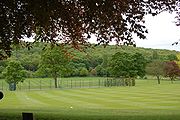

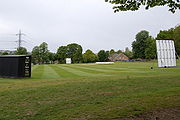
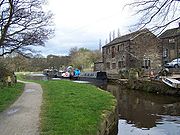
- Woodhouse Grove (Secondary and sixth form) - The Grove benefits from all-round facilities (including a sports and performing arts complex) and comfortable boarding accommodation. As a Methodist Christian foundationChristian schoolA Christian school is a school run on Christian principles or by a Christian organization.The nature of Christian schools varies enormously from country to country, according to the religious, educational, and political cultures...
, providing a caring community, each pupil is encouraged to develop individual talents to the full.
Given its broad intake, academic standards remain high and examination results good. The school is very strong in music and drama. Sporting facilities are first rate and the standards in sport and games are high, providing several county and national representatives. There is a genuine commitment to local community services and a strong fund-raising spirit.
Despite national economic and demographic concerns, the school roll rose yet again in September 2008. There was an unprecedented take-up of places for Year 7 and to accommodate this the school established six classes in Year 7 so that class sizes remain around the optimum twenty pupil mark.
There are several new senior school facilities planned. The sports hall is reaching the end of its planned operational life and is under review. In the latter stages of 2007 a new dining hall was completed and in November 2008 the new music and drama building was opened. The new block, attached to the theatre, includes twelve acoustically engineered music practice rooms, a recording studio, a large drama studio, a recital/rehearsal room, and four specialist classrooms for the teaching of music and drama. The addition represents another step in the substantial improvement of the school's teaching and extra curricular facilities of recent years. There are several other plans laid for the school's expansion.
Boarding
Boarding arrangements are flexible: occasional, weekly or full boarding. Day pupils benefit from the wide range of activities that a boarding school provides and the flexibility of occasionally staying overnight or coming in early for breakfast and staying for tea is appealing to many families.The boarding accommodation consists of three houses: a mixed junior boarding house, which includes a small number of younger pupils from Bronte House, and one house each for senior boys and girls.
Activities are arranged for boarding pupils, including visits to outdoor activity and adventure centres.
Notable staff
Former Manchester United Footballer and YorkshireYorkshire County Cricket Club
Yorkshire County Cricket Club represents the historic county of Yorkshire as one of the 18 major county clubs which make up the English and Welsh domestic cricket structure....
and England cricketer, Arnie Sidebottom
Arnie Sidebottom
Arnold "Arnie" Sidebottom is an English former footballer and cricketer, who played cricket for Yorkshire and played one Test match for England.-Football:...
, teaches PE
Physical education
Physical education or gymnastics is a course taken during primary and secondary education that encourages psychomotor learning in a play or movement exploration setting....
at the Grove.
Graham Roope Memorial Day
On Sunday 13 July 2008, the school held a celebrity cricket match in memory of the late cricketer Graham RoopeGraham Roope
Graham Richard James Roope was an English cricketer, who appeared in twenty one Tests and eight ODIs for England between 1973 and 1978....
. The match was between a Lord's Taverners XI (captained by former Yorkshire cricketer and current Grove parent, Neil Hartley
Neil Hartley
Stuart Neil Hartley is an English first-class cricketer, who appeared for Yorkshire County Cricket Club and Orange Free State in a ten year career which began in 1978....
) and an Old Yorkshire/England XI (captained by former England player and the Grove's current cricket professional, Arnie Sidebottom). The lunch and match raised funds both for the Lord's Taverners and for the school's Community Sports Fund.
Players included Frazer Hines
Frazer Hines
Frazer Hines is an English actor best known for his roles as Jamie McCrimmon in Doctor Who and Joe Sugden in Emmerdale. Hines was born in Horsforth, a civil parish of Leeds.-Acting career:...
, Charlie Dale, Chris Chittell
Chris Chittell
Christopher John Chittell is an English actor best known for his role as Eric Pollard in ITV's Emmerdale, a part that he has played since 1986....
and others from Emmerdale
Emmerdale
Emmerdale, is a long-running British soap opera set in Emmerdale , a fictional village in the Yorkshire Dales. Created by Kevin Laffan, Emmerdale was first broadcast on 16 October 1972...
, former cricket captains Mike Denness
Mike Denness
Mike Denness is a former Scottish cricketer who played for England, Scotland, Essex and Kent. Scotland did not have a representative international team at the time of Denness' career, so he could only play for England at Test and ODI level. Denness became the first Scotsman to captain England...
, Ray Illingworth
Ray Illingworth
Raymond Illingworth, CBE is a former English cricketer, cricket commentator and cricket administrator. He was one of only nine players to have taken 2,000 wickets and made 20,000 runs in First class cricket, and the last one to do so...
, Brian Close
Brian Close
Dennis Brian Close , usually known as Brian Close, is a former cricketer who is the youngest man ever to play Test cricket for England. He was picked for the Test team to play against New Zealand, in July 1949, when he was 18 years old. Close went on to play 22 Test matches for England,...
, former England Cricketers, Arnie Sidebottom, Alan Igglesden
Alan Igglesden
Alan Igglesden is a former English cricketer. He played three Tests and four ODIs for England, but his playing career was ruined by injuries...
and former Yorkshire cricketers Neil Hartley
Neil Hartley
Stuart Neil Hartley is an English first-class cricketer, who appeared for Yorkshire County Cricket Club and Orange Free State in a ten year career which began in 1978....
and Jim Love.
Confucius Language Academy
The new academy is an asset to local educational, business and wider community by enabling improved communication with China and an understanding of Chinese people.The Academy is based in its own dedicated premises within the grounds of Woodhouse Grove School. The Director of the Academy is Mr. Tony Xu, formerly senior lecturer in English at one of the top universities in Shanghai. In addition to its own base the academy has access to additional teaching and learning facilities available at the Grove and beyond. A team of well qualified and suitably experienced tutors have been recruited to offer courses in Chinese for school pupils, university students, businessmen, businesswomen, and other interested people.
Recent inspections
The recent OFSTED boarding report includes the following:- All recommendations from the last inspection (January 2005) have been acted on.
- The school nurses provide an outstanding service to all pupils in promoting and safeguarding their health.
- Boarding, teaching and pastoral staff are very approachable and helpful to boarders.
- There is outstanding catering provision with an excellent range of quality food at all mealtimes.
- Boarders feel safe and are very well behaved.
- The school has good procedures for child protection and staff recruitment.
- There is an outstanding range of sports, leisure and social activities for boarders.
- Staff provide high standards of care and support.
- The caring community ethos in the school helps pupils develop personally as well as academically.
- Parents are happy with the level of communication from the school and feel that any issues they raise are dealt with quickly and effectively.
The Independent Schools Council inspection of March 2007 concluded:
- "The dedicated leadership of the headmaster and senior management team, together with the committed approach of staff to teaching and caring for pupils, enables the school to meet its aim of providing an education which recognises the contribution of all pupils, in whatever field, with success. This is enhanced by the provision of a good range of extra-curricular activities, especially in sport. The school fosters caring behaviour, which is a particular feature of life in the boarding houses. Pupils develop as articulate, confident and friendly individuals. Pupils of all ages and abilities achieve good standards in their academic work and many excel in sport. The support and enterprise of the governing body ensure that resources exist to maintain the school’s success, and that planning for future development is realistic, based on constant and well-judged consideration of the school’s strengths and weaknesses."
School badge
The school badge is an Escutcheon (or shield) bearing a Party per cross division of the field in Argent (or silver) that represents both the Cross of Christ and Peace.The tincture (or colour) of two quadrants is Gules (or red) that represents Courage and magnaminity. The remaining quadrants have a tincture of Vert (or green) that stands for Hope and Joy.
An Escallop (or sea shell) usually represents St James or is symbolic of a pilgrimage to a foreign land. Also because, once separated, a shell cannot be rejoined it also represents Fidelity. Where shown in a group of three the escallops usually represent Crusader grants for three separate Holy Crusades to Galilee.
The castle Keep is the strongest part of a castle and represents the strength of the church.
The open Bible is the basic book of learning and here it shows both faith and the search for knowledge.
The use of the school badge image in this article will have no effect on the school's commercial use of the image in question. It is displayed only to allow identification and critical commentary on school and school logo for this article about the school itself and should not be used for any other purpose.
Notable alumni
The Old Grovian Association currently has 3,600 members from previous students and staff. Notable alumni include:- Sir Albert Newby BraithwaiteAlbert BraithwaiteSir Albert Newby Braithwaite DSO was a British Conservative Party politician. He was the son of Albert Braithwaite, one time Lord Mayor of Leeds and Patti Braithwaite....
DSODistinguished Service OrderThe Distinguished Service Order is a military decoration of the United Kingdom, and formerly of other parts of the British Commonwealth and Empire, awarded for meritorious or distinguished service by officers of the armed forces during wartime, typically in actual combat.Instituted on 6 September...
(2 September 1893 – 20 October 1959) was a BritishUnited KingdomThe United Kingdom of Great Britain and Northern IrelandIn the United Kingdom and Dependencies, other languages have been officially recognised as legitimate autochthonous languages under the European Charter for Regional or Minority Languages...
Conservative PartyConservative Party (UK)The Conservative Party, formally the Conservative and Unionist Party, is a centre-right political party in the United Kingdom that adheres to the philosophies of conservatism and British unionism. It is the largest political party in the UK, and is currently the largest single party in the House...
politician. - John William DraperJohn William DraperJohn William Draper was an American scientist, philosopher, physician, chemist, historian, and photographer. He is credited with producing the first clear photograph of a female face and the first detailed photograph of the Moon...
(1811–1882), chemist, botanist, historian and photographer - Anna FitzpatrickAnna FitzpatrickAnna Fitzpatrick is a professional tennis player from the United Kingdom. She is the British number 12 with a world ranking of No.384 . She trains at Hallamshire Tennis and Squash Club and plays right-handed. Her career-high ranking is world no. 318...
(1989- ), tennis player - George Leslie "Les" GraingeLeslie GraingeGeorge Leslie "Les" Grainge was an English professional rugby league footballer of the 1930s who at representative level played for England, and at club level for Bradford Northern, playing at , i.e...
(1910–1983), rugby league footballer of the 1930s for England, and Bradford Northern - John Anderson HartleyJohn Anderson HartleyJohn Anderson Hartley was an Australian educator.Hartley was the son of the Rev. John Hartley, governor of the Wesleyan College, Handsworth, Birmingham, and was born in Yorkshire, England. He was educated at the Woodhouse Grove School, near Bradford, , and University College, London, where he...
(1844–1896), educationist - John HillabyJohn HillabyJohn Hillaby was a British travel writer and explorer.Hillaby was the son of a Yorkshire printer. He was educated at Woodhouse Grove School, Leeds. He embarked on a career in journalism, interrupted by service in the Second World War...
(1917–1996), travel writer - Thomas HockenThomas HockenThomas Morland Hocken was a prominent New Zealand collector, bibliographer and researcher. He was born in Stamford, Lincolnshire on 14 January 1836, the son of a Wesleyan minister, and educated at Woodhouse Grove School and a school in Newcastle...
(1836–1910), collector, bibliographer and researcher - Nick HoughtonNick HoughtonGeneral Sir John Nicholas Reynolds Houghton, GCB, CBE, ADC Gen. is a senior officer in the British Army, currently serving as Vice-Chief of the Defence Staff, the deputy to the Chief of the Defence Staff, the head of Britain's Armed Forces; based at the Ministry of Defence, London.-Early life:Born...
(1954- ), GeneralGeneralA general officer is an officer of high military rank, usually in the army, and in some nations, the air force. The term is widely used by many nations of the world, and when a country uses a different term, there is an equivalent title given....
Sir John Nicholas Reynolds Houghton KCB, CBEOrder of the British EmpireThe Most Excellent Order of the British Empire is an order of chivalry established on 4 June 1917 by George V of the United Kingdom. The Order comprises five classes in civil and military divisions...
is the Vice-Chief of the Defence StaffVice-Chief of the Defence StaffThe Vice-Chief of the Defence Staff is the deputy to the Chief of the Defence Staff, the professional head of the British Armed Forces.-List of Vice Chiefs of the Defence Staff:*1964 to 1966 - Air Chief Marshal Sir Alfred Earle...
. - John Lockwood KiplingJohn Lockwood KiplingJohn Lockwood Kipling, C.I.E. was an English art teacher, illustrator, museum curator, and father of author Rudyard Kipling.-Biography:...
(1837–1911), illustrator, museum curator - Kathryn LengKathryn LengKathryn Leng is an English cricketer for Bradford/Leeds UCCE, England Women and Yorkshire Women.Born in Pudsey, Yorkshire, Leng was U-19 captain for England Women and first played for the senior squad in a One-day International in 1995...
(1985-), cricketer - Herbert Edward PalmerHerbert Edward PalmerHerbert Edward Palmer was an English poet and critic.He was born in Market Rasen, Lincolnshire and educated at Woodhouse Grove School, Birmingham University and Bonn University...
(1880–1961), poet - William Mabane, 1st Baron Mabane (1895–1969), Liberal politician, held office as Assistant Postmaster-GeneralAssistant Postmaster-GeneralThe Assistant Postmaster General is a defunct junior ministerial position in the United Kingdom Government.The title of Postmaster General was abolished under the Post Office Act 1969...
and Minister of State for Foreign AffairsMinister of State for Foreign AffairsMinister of State for Foreign Affairs is a junior ministerial position in the British government.-Ministers of State for Foreign Affairs 1945-1968:*1945: William Mabane*1945-1946: Philip Noel-Baker*1946-1950: Hector McNeil*1950-1951: Kenneth Younger...
. - Uzair MahomedUzair MahomedUzair Mahomed is a South African born English cricketer. Mahomed is a right-handed batsman who bowls right-arm off break. He was born in Johannesburg, Transvaal Province and educated in England at Bradford Grammar School and Woodhouse Grove School.Mahomed played a single Minor Counties...
(1987-), cricketer - Katie O'BrienKatie O'BrienKatie Jill O'Brien is an English former professional tennis player from Beverley, Yorkshire. She was briefly the British No. 1 tennis player...
(1986- ), tennis player - John PoulsonJohn PoulsonJohn Garlick Llewellyn Poulson was a British architect and businessman who caused a major political scandal when his use of bribery was disclosed in 1972. The highest-ranking figure to be forced out was Conservative Home Secretary Reginald Maudling...
(1910–1983), architect - Samuel Evans RoweSamuel Evans RoweThe Reverend Samuel Evans Rowe was a minister who reached high rank in the Methodist church before a distinguished period as a missionary in South Africa, holding senior posts in the church, and founding an educational institution for girls.-Early life:He was born in Midsomer Norton, Somerset,...
(1834–1897), Methodist missionary to South Africa - Paul SampsonPaul Sampson (rugby player)Paul Christian Sampson is an English rugby union footballer who plays at wing or full-back for London Welsh...
(1977- ), rugby player - Dan ScarbroughDan ScarbroughDan Scarbrough is a rugby union player who plays on the wing or full back for Racing Métro.He was National Division One leading try scorer with Wakefield for two seasons before moving to Leeds Tykes where he continued his try scoring exploits, finishing second in the 2001/2002 list of Zurich...
(1978- ), rugby player - Ajmal ShahzadAjmal ShahzadAjmal Shahzad is an English cricketer who plays for Yorkshire County Cricket Club. A right-handed batsman and right-arm fast-medium bowler, he made his international debut in a Twenty20 International for England in February 2010...
(1985- ), cricketer - Joe BedfordJoe BedfordJoe Bedford is an English professional rugby union player. His primary position is scrum half.Bedford joined Newport Gwent Dragons for the 2011-12 season having previously played for Rotherham Titans and Leeds Carnegie....
(1984-), Rugby player - Edward Sugden (1854–1935), Methodist and first master of Queen's College (University of Melbourne)Queen's College (University of Melbourne)Queen's College is a residential College affiliated with the University of Melbourne providing accommodation to 220 students who are attending the University of Melbourne, Victorian College of the Arts, RMIT University and Monash University's Victorian College of Pharmacy.In addition to the...
- Michael WalkerMichael Walker (general)General Michael John Dawson Walker, Baron Walker of Aldringham, is a retired British Army officer. Commissioned in 1966, he served in Cyprus, Northern Ireland, and in a variety of staff posts in the United Kingdom until 1984...
(1944- ), now Baron Walker of Aldringhan, was Chief of the Defence StaffChief of the Defence Staff (United Kingdom)The Chief of the Defence Staff is the professional head of the British Armed Forces, a senior official within the Ministry of Defence, and the most senior uniformed military adviser to the Secretary of State for Defence and the Prime Minister...
(CDS) in the United Kingdom from May 2003 until April 2006.

